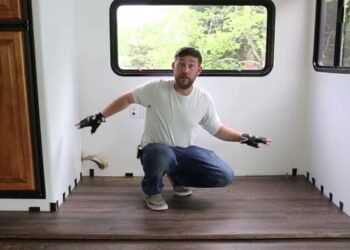You can install electrical wiring in two versions: hidden wiring or open (external) wiring. The most common and safe in operation is precisely closed wiring, since it is isolated from external influences and is located in the thickness of the fireless material. Such material can be plastic, metal or brick.
Especially this type of wiring is relevant in those rooms where an increased level of dampness and a possible ingress of water for wiring are observed, for example, a bathroom, a toilet.
You can “hide” the wiring either in the walls or in the floor. However, professional electricians do not recommend hiding wiring to the floor, because it is not rational, this should only be done if the walls are completely impossible to affect.
External wiring is very common in old residential buildings, the wires were attached right on the walls, it had an unaesthetic appearance. Now external wiring is mainly in country houses or garages. Installation of such a wiring does not take much time, but anyway, you need to provide special boxes for wiring. Also if you need repairs, then you do not need to hammer the walls or floor.
Despite this, this type of wiring is considered unsafe, in addition, such a wiring “eats” the useful space in the room, makes it not aesthetic. Open wiring is not recommended to be mounted if there are animals in the house. The wavy parrot can easily reach the box with wiring and pierce it with claws or beaks, so you will lose your favorite parrot and are left without electricity for a while.
The same thing can happen if you have a cat at home, cats are able to jump high enough, so the cat does not cost anything to disrupt the wiring with insulation. If when installing closed wiring, it is necessary to cross two or three wires, then special insulating clamps or pipes are used, in extreme cases, you need to additionally rewind this section with an insulating tape.
The ends of the wiring that are displayed to chandeliers or sconces must be removed through special clamps, if the end of the wiring is removed and contacts with the combustible surface, in this case, it is necessary to isolate it with a fireproof cap.
Particular attention is deserved to conduct wiring in pre -revolutionary buildings, where walls and floor can be historical value.















